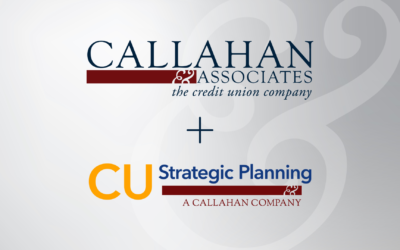Strategic planning gives credit union management teams the opportunity to come together and formulate a plan to guide their institution. Such engagements have mostly moved into the virtual realm; however, the importance of this melding of minds cannot be understated. Incorporating peer analysis is an ideal way to kick-start a strategic conversation and enhance the impact of planning. After all, equipped with current, verified financial data, leaders can more easily spot weaknesses to correct as well as identify areas on which to capitalize.
Here are a few key ratios and high-level areas to start your discussion.
Growth Trends
Membership Growth: A credit union’s business strategy is a major driver of its member growth. More effective strategies for a given marketplace typically yield stronger member growth. The board’s philosophy toward service levels, delivery channels, product pricing, and breadth of services also influence member growth.
Additionally, member growth is a great litmus test for evaluating the introduction of new products and services by a credit union.
Asset Quality
Delinquency Ratio: The delinquency ratio measures the credit risk of a loan portfolio. It is a forecaster of future loan losses; therefore, unusual increases or decreases generally affect future earnings. The level of delinquency a credit union can sustain is a function of several factors, including loan income, credit risk management, and loan loss management. Risk-based pricing is often accompanied by higher delinquency, but credit unions typically compensate for that higher delinquency by charging higher interest rates and in turn, achieving higher loan yields.
Ratios relative to asset quality are top-of-mind for credit union leaders as we measure the short and long-term impacts of COVID-19.
Business Model
Loan-To-Share Ratio: A credit union’s loan and deposit acquisition performance drives its loan-to-share ratio. Unless liquidity is an issue, most credit unions concentrate on building the loan portfolio rather than focus on deposits.
A credit union’s operations — sales culture, marketing, product development, risk management, etc. — generally influences loan growth more than deposit growth. Non-operational factors, such as membership demographics, are what tend to influence deposit growth.
A higher loan-to-share ratio typically indicates greater profitability, and in broader terms, is an indication of how efficiently a credit union is leveraging its deposit portfolio to achieve stronger performance and create member value.
Productivity And Member Relationships
Members Per Employee (FTE): The members per employee ratio measures the productivity of a credit union’s employee base. In theory, a higher ratio means a credit union is more productive, but other factors also play a part.
When examining the ratio, credit unions should also consider product penetration rates, members per branch location, the geographic distribution of the membership, and field of membership requirements. Strategic factors that impact the ratio include organizational goals — sales versus service models — growth, and product and technology development.
How To Get Started With Data
Callahan & Associates’ Peer-to-Peer software contains hundreds of pre-built financial graphs and tables to assist in strategic planning. Knowing where to start and choosing what to analyze can be daunting, but that shouldn’t stop teams from putting together a relevant financial analysis presentation.
Request a custom Strategic Planning Trend Report.
We’ll show you the ins and outs of Peer-to-Peer while creating a custom scorecard for your credit union to use during your next planning session of board meeting.
This blog has been condensed and originally appeared on our content website, CreditUnions.com.
Click here to read the full article.
More Blogs
Callahan & Associates and CU Strategic Planning Combine To Increase Credit Union Impact
Callahan & Associates and CU Strategic Planning proudly announce their strategic alliance, driven by a shared vision to empower credit unions to make a meaningful impact on their members and communities.
Insights And Advice For Credit Union Leaders
Are you new to a leadership role or preparing for one? Are you focused on empowering future leaders? Are you a veteran leader looking to be inspired? We recently asked new and established leaders what it means to embrace different leadership styles, encourage culture changes, and what advice they have for the next generation of leaders.
5 Governance Tips for Credit Union Boards
Insights From Callahan Consultant, Chris Howard There’s a growing — albeit misguided — distrust of credit unions today, making effective governance more important than ever … and harder than ever. At its core, good governance is fairly simple, although never...
15 Key Ratios Every Credit Union Board Should Know
There are thousands of data points you can share with your board about your credit union’s performance, the industry, and the economy. The challenge is identifying which key ratios are most important to your credit union. If you’re looking for a list of key ratios and...
Why Great Lakes CU Is Betting Big On Partnerships
Last week, Callahan & Associates hosted the inaugural installment in its "A Conversation With..." webinar series, featuring Great Lakes Credit Union CEO Steve Bugg. In the exclusive conversation, Bugg emphasized the value partnerships can bring to the industry and...
Browse 5300 Call Reports With Ease.
Every CU 5300 Call Report – Instantly And Seamlessly. If your goal is to reach more credit unions with your products and services, you likely know all too well how long it takes to pull 5300 Call Reports for dozens of prospects to fuel your sales pipeline and...
How Sales Teams Work More Efficiently In Peer Suite
Is your team spending countless hours manually pulling reports and compiling data for your credit union prospects? Are you looking for a more efficient way to collaborate with your team and onboard new members? Callahan’s Peer Suite helps credit union suppliers...
Ultimate Benchmarking Guide For Credit Unions
What Is Benchmarking? Benchmarking is the interpretation and analysis of financial information in order to make direct performance comparisons to other credit unions, banks, and customized peer groups. It enables a credit union to track internal goals, identify...
How Interra Is Advancing Its Purpose Journey
Several years ago, the five-member executive team of Interra Credit Union ($1.7B, Goshen, IN) participated in a virtual learning experience from Callahan & Associates offered in collaboration with Harvard Business School Online.
3 Peer Group Types That Go Beyond Asset Size
While benchmarking your performance against asset-based peer groups has value, relying strictly on asset size for peer group analysis can skew your benchmarks by including credit unions that don’t share much in common with your institution. Just take a look at this...










